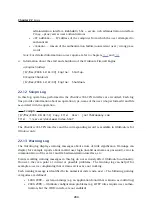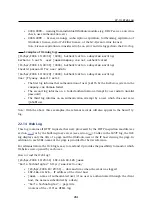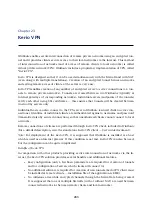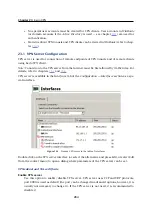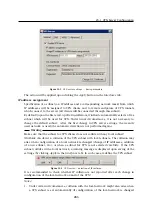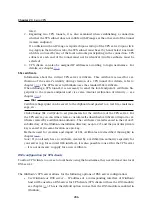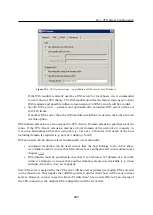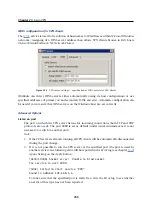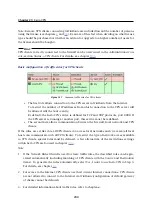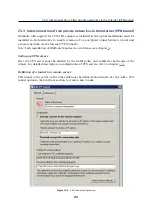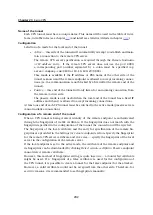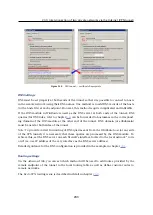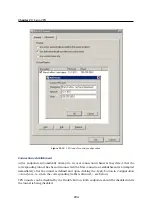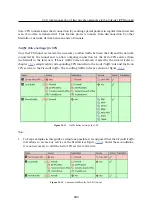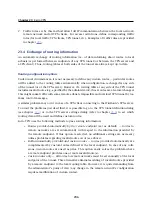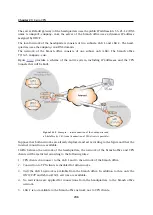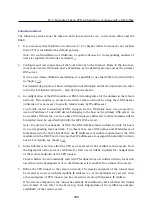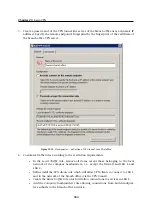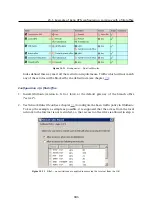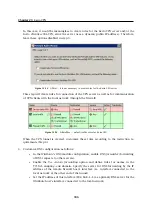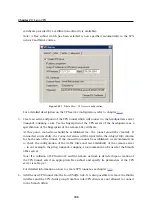
23.3 Interconnection of two private networks via the Internet (VPN tunnel)
293
Figure 23.9
VPN tunnel — certificate fingerprints
DNS Settings
DNS must be set properly at both sends of the tunnel so that it is possible to connect to hosts
in the remote network using their DNS names. One method is to add DNS records of the hosts
(to the hosts file) at each endpoint. However, this method is quite complicated and inflexible.
If the
DNS
module in
WinRoute
is used as the DNS server at both ends of the tunnel, DNS
queries (for DNS rules, refer to chapter
) can be forwarded to hostnames in the correspond-
ing domain of the
DNS
module at the other end of the tunnel. DNS domain (or subdomain)
must be used at both sides of the tunnel.
Note:
To provide correct forwarding of DNS queries sent from the
WinRoute
host (at any side
of the VPN tunnel), it is necessary that these queries are processed by the
DNS
module. To
achieve this, set the DNS server on each firewall’s interface located to the local network “to its
own” (i.e. use IP address of the very interface as the DNS server address).
Detailed guidance for the DNS configuration is provided in the example in chapter
.
Routing settings
On the
Advanced
tab, you can set which method will be used to add routes provided by the
remote endpoint of the tunnel to the local routing table as well as define custom routes to
remote networks.
The
Kerio VPN
routing issue is described in detail in chapter
Summary of Contents for KERIO WINROUTE FIREWALL 6
Page 1: ...Kerio WinRoute Firewall 6 Administrator s Guide Kerio Technologies s r o...
Page 157: ...12 3 Content Rating System Kerio Web Filter 157 Figure 12 7 Kerio Web Filter rule...
Page 247: ...19 4 Alerts 247 Figure 19 14 Details of a selected event...
Page 330: ...Chapter 23 Kerio VPN 330 Figure 23 55 The Paris filial office VPN server configuration...
Page 368: ...368...


